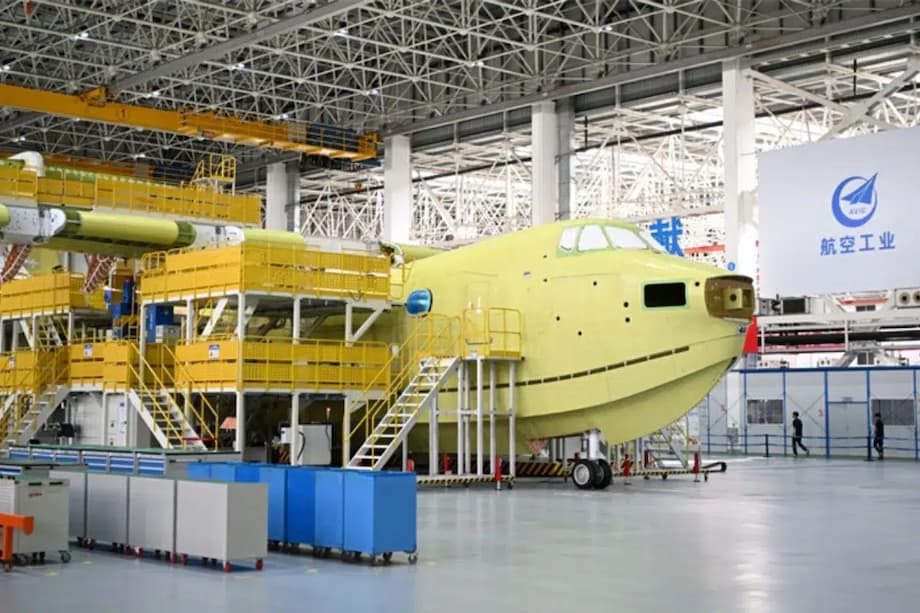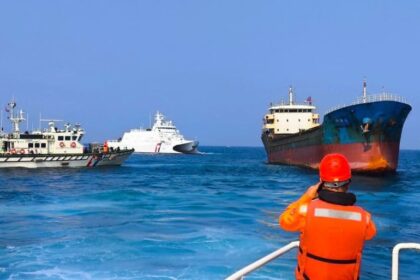China’s AG600 Kunlong: A New Era for Amphibious Aviation
After more than 15 years of development, China has officially launched mass production of the AG600 “Kunlong” amphibious aircraft, marking a historic milestone in the nation’s aviation industry. Larger than a Boeing 737 and capable of landing on water, the AG600 is now the world’s largest operational amphibious aircraft by takeoff weight. Its entry into mass production not only demonstrates China’s growing technological prowess but also signals a new chapter in emergency response, disaster relief, and maritime operations both within China and potentially abroad.
- China’s AG600 Kunlong: A New Era for Amphibious Aviation
- What Makes the AG600 Kunlong Unique?
- From Blueprint to Reality: The AG600’s Development Journey
- Mission Versatility: Firefighting, Rescue, and Beyond
- Strategic and Geopolitical Implications
- Engineering Challenges and Innovations
- Comparisons with Other Amphibious Aircraft
- What’s Next for the AG600 and China’s Aviation Industry?
- In Summary
The AG600’s journey from concept to production is a story of ambition, innovation, and strategic vision. Developed by the Aviation Industry Corporation of China (AVIC), the aircraft is designed to meet urgent national needs for emergency rescue, natural disaster prevention, and maritime operations. With its unique capabilities, the AG600 stands poised to reshape how nations respond to crises on land and at sea.
What Makes the AG600 Kunlong Unique?
The AG600 is a true giant of the skies and seas. Measuring 38.9 meters in length, 11.7 meters in height, and with a wingspan of 38.8 meters, it rivals or surpasses many commercial airliners in size. Its maximum takeoff weight is an impressive 60 tonnes, making it the world’s largest amphibious civilian aircraft currently in service. The aircraft’s design features a streamlined upper fuselage and a boat-shaped lower hull, allowing it to operate from both conventional runways and bodies of water—including seas, lakes, and rivers.
Powered by four domestically produced WJ-6 turboprop engines, the AG600 can cruise at speeds up to 500 km/h and has a maximum range of 4,500 kilometers. Its operational ceiling reaches 7,600 meters, and it can remain airborne for up to 12 hours, enabling long-range missions over vast and remote areas. The aircraft’s amphibious nature is further enhanced by floats on each wing, which provide stability during water operations and prevent overturning in rough conditions.
One of the AG600’s standout features is its ability to take off and land on water surfaces with waves up to two meters high (sea state 3), a feat that requires advanced engineering and robust structural design. This capability allows the aircraft to access remote islands, atolls, and disaster zones where traditional runways are unavailable or damaged.
Technical Specifications at a Glance
- Length: 38.9 meters
- Wingspan: 38.8 meters
- Height: 11.7 meters
- Maximum Takeoff Weight: 60 tonnes
- Maximum Range: 4,500 kilometers
- Cruise Speed: 220–500 km/h
- Service Ceiling: 7,600 meters
- Endurance: 12 hours
From Blueprint to Reality: The AG600’s Development Journey
The AG600 project officially began in 2009, reflecting China’s ambition to develop indigenous large aircraft for both civil and strategic purposes. The development process brought together 292 enterprises and institutions, 16 universities, and hundreds of supporting units across 22 provinces and cities. Tens of thousands of components were designed, tested, and integrated, showcasing China’s growing capabilities in collaborative design, manufacturing, and supply chain management for complex aerospace projects.
Key milestones in the AG600’s development include:
- 2017: Maiden flight from land
- 2018: First takeoff from a reservoir (water-based operation)
- 2020: First open-sea flight
- 2023: Successful firefighting demonstrations
- 2025: Type and production certification, entry into mass production
Certification from the Civil Aviation Administration of China (CAAC) was a rigorous process, ensuring the AG600 meets stringent airworthiness and safety standards. The production certificate, granted in June 2025, confirms that AVIC’s manufacturing systems consistently adhere to these standards, paving the way for commercial deliveries and operational deployment.
Mission Versatility: Firefighting, Rescue, and Beyond
The AG600 was conceived as a multi-role platform, capable of adapting to a wide range of missions. Its primary roles include aerial firefighting, maritime search and rescue (SAR), disaster relief, and logistics support. The aircraft’s modular design allows for future variants tailored to specific tasks, such as maritime surveillance, environmental monitoring, and even military applications.
Aerial Firefighting: A Game Changer
Forest fires are a growing threat worldwide, and the AG600 is uniquely equipped to combat them. The aircraft can scoop up to 12 tonnes of water in just 20 seconds by skimming across a water surface. It can then drop the entire load over a fire zone in as little as four seconds, covering an area of 3,000 to 4,000 square meters—equivalent to the firefighting power of 300 personnel in a single pass. This rapid response capability is expected to significantly improve the efficiency and effectiveness of China’s forest fire rescue operations.
Huang Lingcai, chief designer of the AG600 series, described the project as “a tough nut to crack,” highlighting the complex engineering required to ensure reliability in both air and water environments.
Search and Rescue: Reaching the Unreachable
In maritime SAR missions, the AG600 can carry up to 50 people per sortie, making it invaluable for evacuating survivors from shipwrecks, floods, or remote islands. Its ability to land on water allows it to reach disaster zones inaccessible to conventional aircraft, delivering supplies, medical teams, and emergency equipment directly to those in need.
Disaster Relief and Logistics
The AG600’s large cargo hold and long range make it suitable for transporting relief supplies, equipment, and personnel to areas cut off by natural disasters. Its amphibious capability ensures that aid can be delivered even when runways are damaged or non-existent, enhancing China’s rapid response capacity in emergencies.
Strategic and Geopolitical Implications
While the AG600 is officially a civilian aircraft, its capabilities have clear strategic and military implications, especially in the context of China’s maritime ambitions. The aircraft’s ability to operate in the South China Sea, East China Sea, and other contested regions gives China a powerful tool for logistical resupply, medevac, rapid personnel deployment, and maritime patrol—without relying on conventional runways.
China’s expansive territorial claims in the South China Sea, mapped via the controversial “Nine-Dash Line,” are contested by several regional actors, including Vietnam, the Philippines, Malaysia, Brunei, Taiwan, and Japan. The United States and its allies have increased their military presence in the region, conducting freedom of navigation operations to counter China’s maritime expansion. In this context, the AG600’s operational deployment could bolster China’s logistical reach and strategic mobility in disputed island zones.
An expert from AVIC emphasized, “The successful development of the AG600 aircraft has led to the creation of a core technology system for large amphibious aircraft in China, marking a historic breakthrough in the development of the country’s civil aviation industry for special-purpose large aircraft.”
The AG600’s modular design supports potential future adaptations for maritime surveillance, anti-submarine warfare, or enforcement of exclusive economic zones. These dual-use capabilities take on heightened relevance amid growing geopolitical tensions in the Indo-Pacific.
Engineering Challenges and Innovations
Designing an aircraft that can operate efficiently on both land and water is a formidable engineering challenge. The AG600’s hull must withstand the stresses of water landings, while its aerodynamic profile must minimize drag and ensure stability in flight. The floats on each wing are critical for preventing capsizing during water operations, especially in rough seas.
The aircraft’s ability to scoop large volumes of water quickly and release them precisely over target areas required the development of advanced water intake and release systems. Extensive testing was conducted to ensure reliability and safety in diverse operational environments, from mountainous regions to open ocean.
The AG600’s development has also established technical standards and management experience for future Chinese aerospace projects, setting a precedent for collaborative innovation and large-scale manufacturing in the country’s aviation sector.
Comparisons with Other Amphibious Aircraft
The AG600 stands out among amphibious aircraft worldwide. While Russia’s Beriev Be-200 and Japan’s ShinMaywa US-2 are well-known in the field, the AG600 surpasses them in size and payload capacity. Its maximum takeoff weight of 60 tonnes is significantly higher than the Be-200’s 43.7 tonnes and the US-2’s 47.7 tonnes. The AG600’s water-carrying capacity for firefighting (12 tonnes) is double that of the Canadair CL-415, the current industry standard.
Unlike its predecessor, the Harbin SH-5 (of which only seven were built), the AG600 is designed for mass production and international markets. AVIC expects the aircraft to compete for overseas sales, particularly in countries prone to wildfires and maritime disasters.
What’s Next for the AG600 and China’s Aviation Industry?
With mass production underway, AVIC plans to deliver the first AG600 units by the end of 2025. The company is also developing specialized variants for different missions, aiming to create a rapid response network centered on the Kunlong. Future efforts will focus on advancing the AG600’s capabilities for emergency rescue, disaster prevention, and maritime operations, as well as exploring export opportunities.
The knowledge and experience gained from the AG600 project are expected to benefit future Chinese aerospace initiatives, including the development of other large special-purpose aircraft. The AG600 joins the ranks of China’s major aviation achievements, alongside the Xi’an Y-20 military transport and the Comac C919 passenger jet.
In Summary
- The AG600 Kunlong is the world’s largest operational amphibious aircraft, now in mass production in China.
- It is designed for multi-role missions, including firefighting, search and rescue, disaster relief, and logistics.
- The aircraft can scoop 12 tonnes of water in 20 seconds and evacuate up to 50 people per mission.
- Its amphibious design allows operations from both land and water, even in rough sea conditions.
- The AG600’s development marks a major technological and strategic milestone for China’s aviation industry.
- While officially a civilian aircraft, its capabilities have significant military and geopolitical implications, especially in the Indo-Pacific region.
- Mass production is expected to enhance China’s emergency response network and may open doors to international markets.












